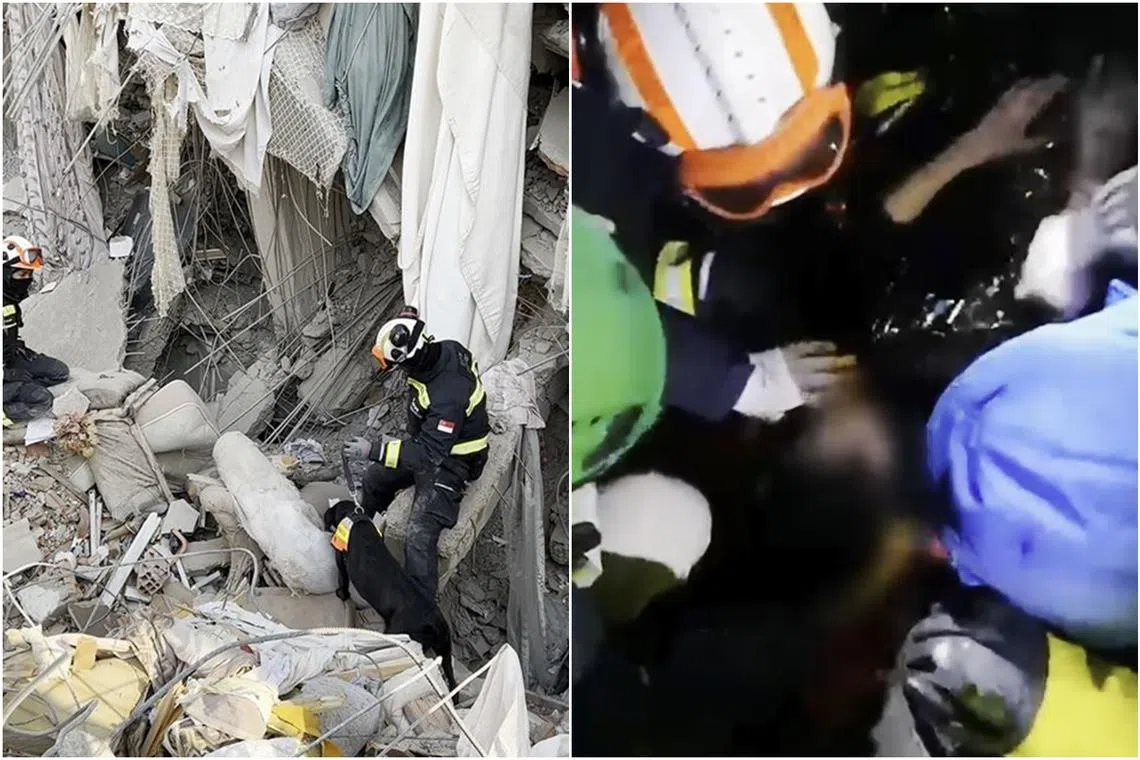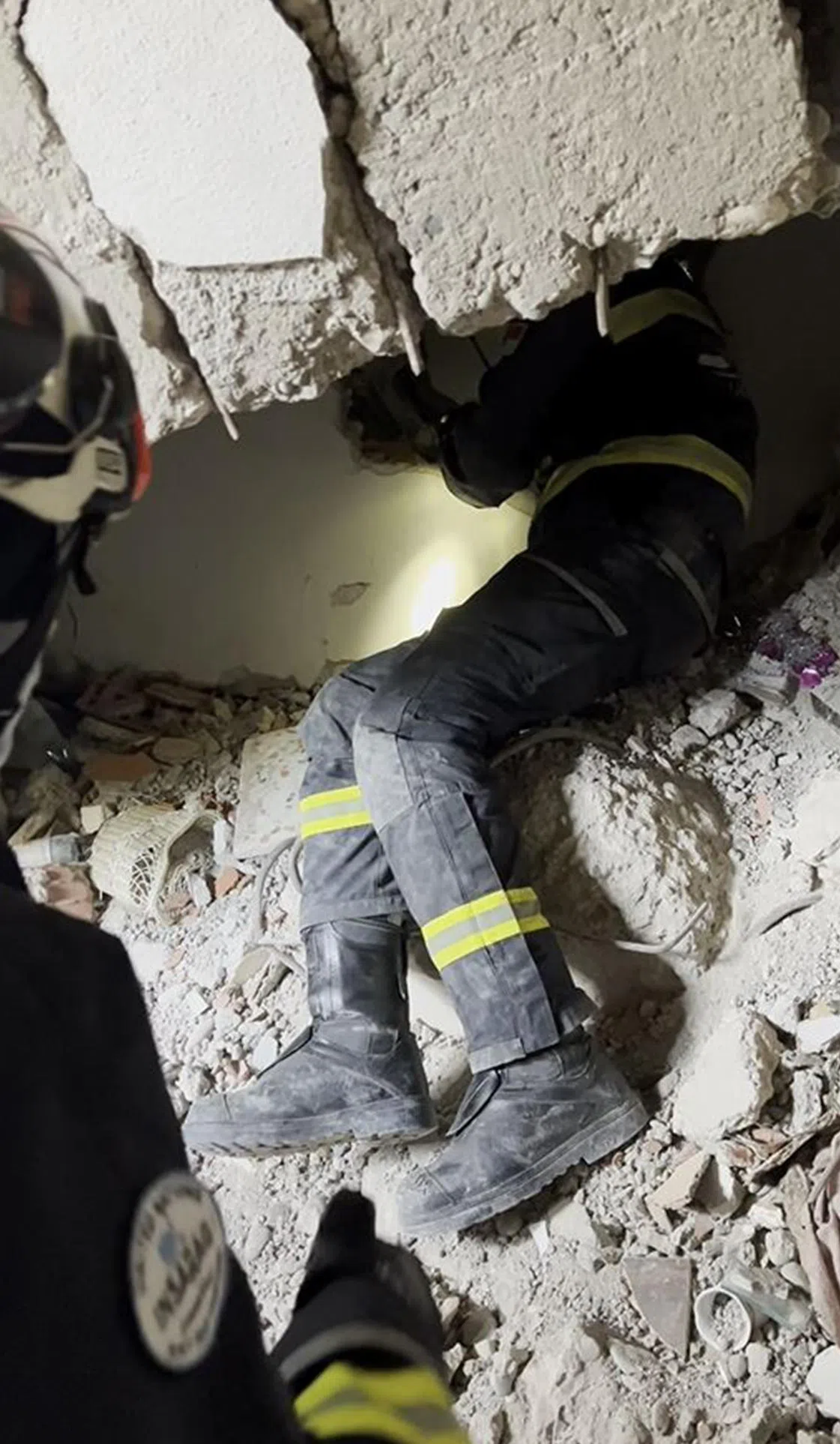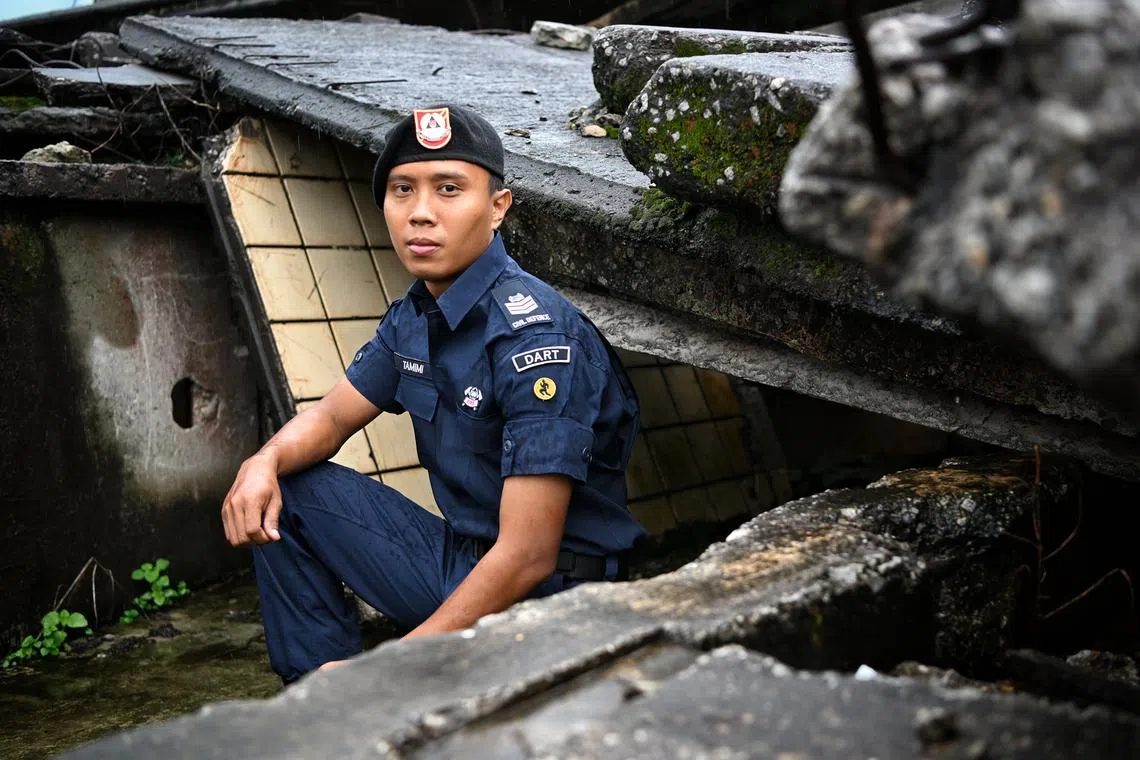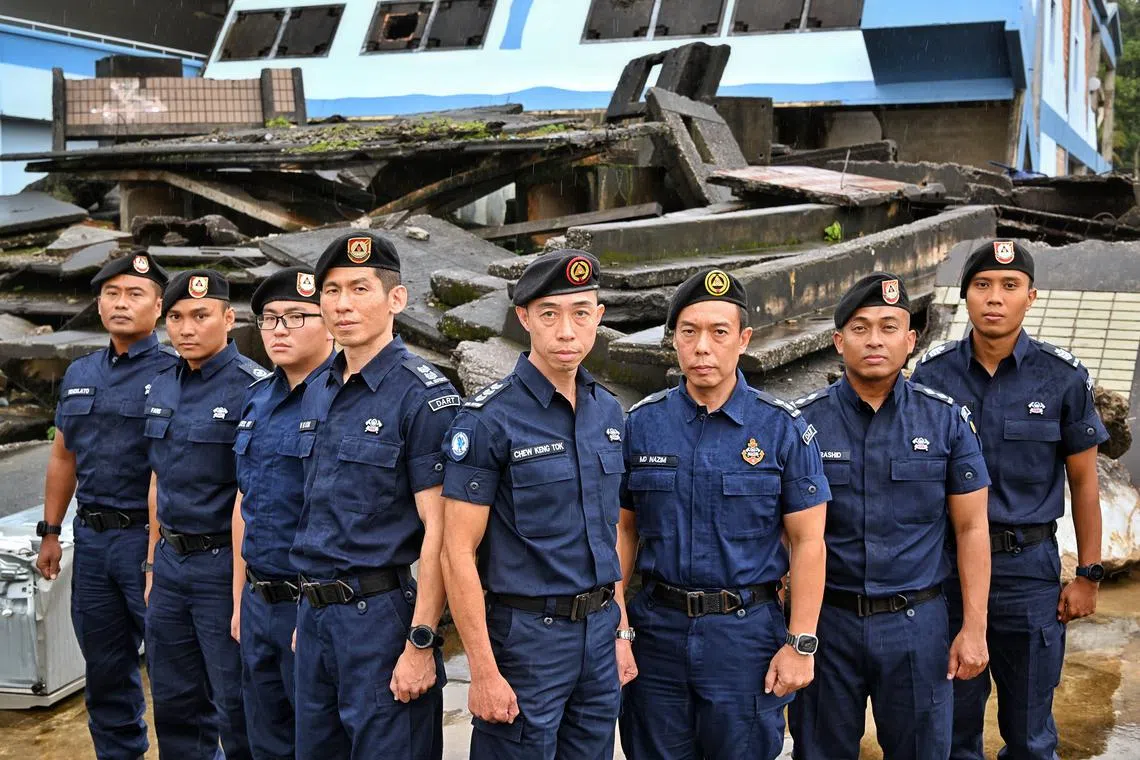SCDF officer crawled through debris to rescue boy, 12, hidden under mattress after Turkey earthquake
Sign up now: Get ST's newsletters delivered to your inbox

The young survivor was one of two people rescued by the Operation Lionheart contingent.
PHOTOS: SINGAPORE CIVIL DEFENCE FORCE
SINGAPORE – The carpet moved for only one second, but amid the stillness of rubble, it was confirmation for Singapore Civil Defence Force (SCDF) officers that there was life underneath.
It was two days after the devastating earthquakes in Turkey. The Operation Lionheart team
Soon after a search dog from a Spanish rescue team sensed there might be someone alive underneath, the SCDF team detected the flick from the carpet using a fibre-optic scope.
Working alongside the Spanish and Turkish rescuers, the team broke through the rubble.
After the carpet was located along with a mattress, Staff Sergeant Muhammad Tamimi Mohamad Mamsi, 31, from the force’s elite Disaster Assistance and Rescue Team (Dart), was sent in.
Due to the rescue specialist’s actions, a 12-year-old boy was rescued from the rubble
Speaking to the media at the Home Team Tactical Centre in Mandai Road on Friday, about two weeks after they had returned from Turkey on Feb 18, members of the contingent recounted the race against time to save lives.
An advance team of 20 officers arrived in Kahramanmaras a second team of 48 officers and four dogs
The rescue mission required careful planning. For instance, the role of team member Lieutenant-Colonel Mohamed Nazim Kudin was to help coordinate some 30 international teams so that there was no overlap in their efforts.
This is in accordance with guidelines by the United Nations’ International Search and Rescue Advisory Group, which consists of more than 90 countries and organisations.
These guidelines address the international urban search and rescue methodology, and what is expected of international teams as they respond to an earthquake-affected country. They also describe how coordination should take place between the teams and the affected country.
Recalling the challenges he faced in getting to the victim, Staff Sgt Tamimi said: “I had to be cautious when I entered the void because it was a confined space. There were also reinforcing bars surrounding the entrance. My movement was hugely restricted because of the limited space. There was debris strewn all over.”
The rescuers carefully removed the broken furniture and pipes in the way before he crawled on his belly through a space about 0.5m high.

The rescue mission required careful planning due to limited space.
PHOTO: SINGAPORE CIVIL DEFENCE FORCE
After a painstaking distance of about 3m, he reached the carpet and mattress. Feeling around, he came into contact with someone lying underneath. Using special scissors to cut through the mattress, he saw the face of a young boy lying on his right shoulder.
He called out, but there was no reply. Tapping the child on the shoulder also brought no response.
“I tried to feel for his pulse. Initially, I was doubtful because my hands were very cold. But then – surprisingly – I managed to sense a faint pulse from the boy’s neck. I felt relieved knowing that the boy was still alive,” he said.
Through hand signals, Staff Sgt Tamimi was able to relay to the boy that he was there to rescue him.
Just as the SCDF officer’s thoughts turned to how he was going to bring him out, the boy moved and was able to crawl out of the space on his own.
Outside the rubble, Lieutenant Abdul Rashid Abdul Karim, Dart deputy rescue commander, said another boy, who had identified himself as a relative, was waiting anxiously. He was in tears of joy following the rescue.
Staff Sgt Tamimi said he has not forgotten how it felt to pull someone from the rubble. “It was a collective effort – not just by Singapore, but also by the local and Spanish teams,” he added.

Staff Sgt Muhammad Tamimi Mohamad Mamsi said he has not forgotten how it felt to pull someone from the rubble.
ST PHOTO: CHONG JUN LIANG
The following day, three bodies were pulled out from under the same rubble.
Lt Rashid said in the 10 days he was in Turkey, he noticed the deep impact of the disaster on people.
He said: “There were relatives waiting beside the buildings to see if anybody would be rescued or to identify their relatives. We did not get a chance to talk to them, but I felt for them.
“It was very sad to see them – you could see tears in their eyes. Grown men were crying by the roadside looking at the rubble. I felt pity for them.”
The next day, five Dart personnel worked with an SCDF paramedic and the Local Emergency Management Agency to rescue a man stuck in another two-storey building
First Warrant Officer (WO1) Muhammad Faris Mohammad, who was involved in the rescue, said the cold, which went below 0 deg C at times, was challenging.
Also part of the rescue was WO1 Fendilato Mohamad Tahir.

(From left) WO1 Fendilato Mohamad Tahir, WO1 Muhammad Faris Mohammad, Capt Joel Ee, Lt-Col Lok Wee Keong, Col Chew Keng Tok, Lt-Col Mohamed Nazim Kudin, Lt Abdul Rashid Abdul Karim and Staff Sgt Muhammad Tamimi Mohamad Mamsi from the SCDF’s Operation Lionheart Mission.
ST PHOTO: CHONG JUN LIANG
When asked how he felt after the rescue, he said: “This is collective work. So it is not about who gains points, which country is the better team.
“We are just here to assist; it is not about us.”
The contingent’s commander, Colonel Chew Keng Tok, said that as part of the review following the operation, the team members will look at how they can work in cold climates.


